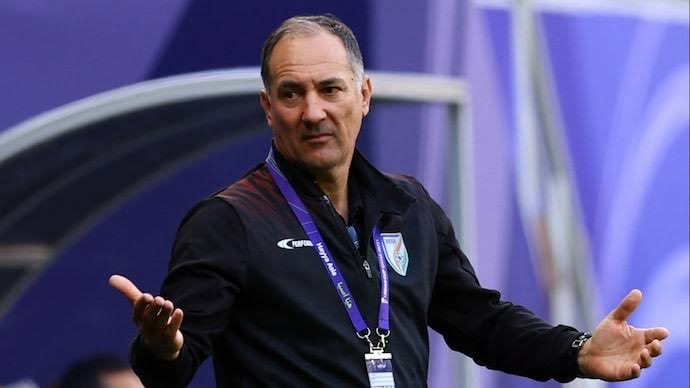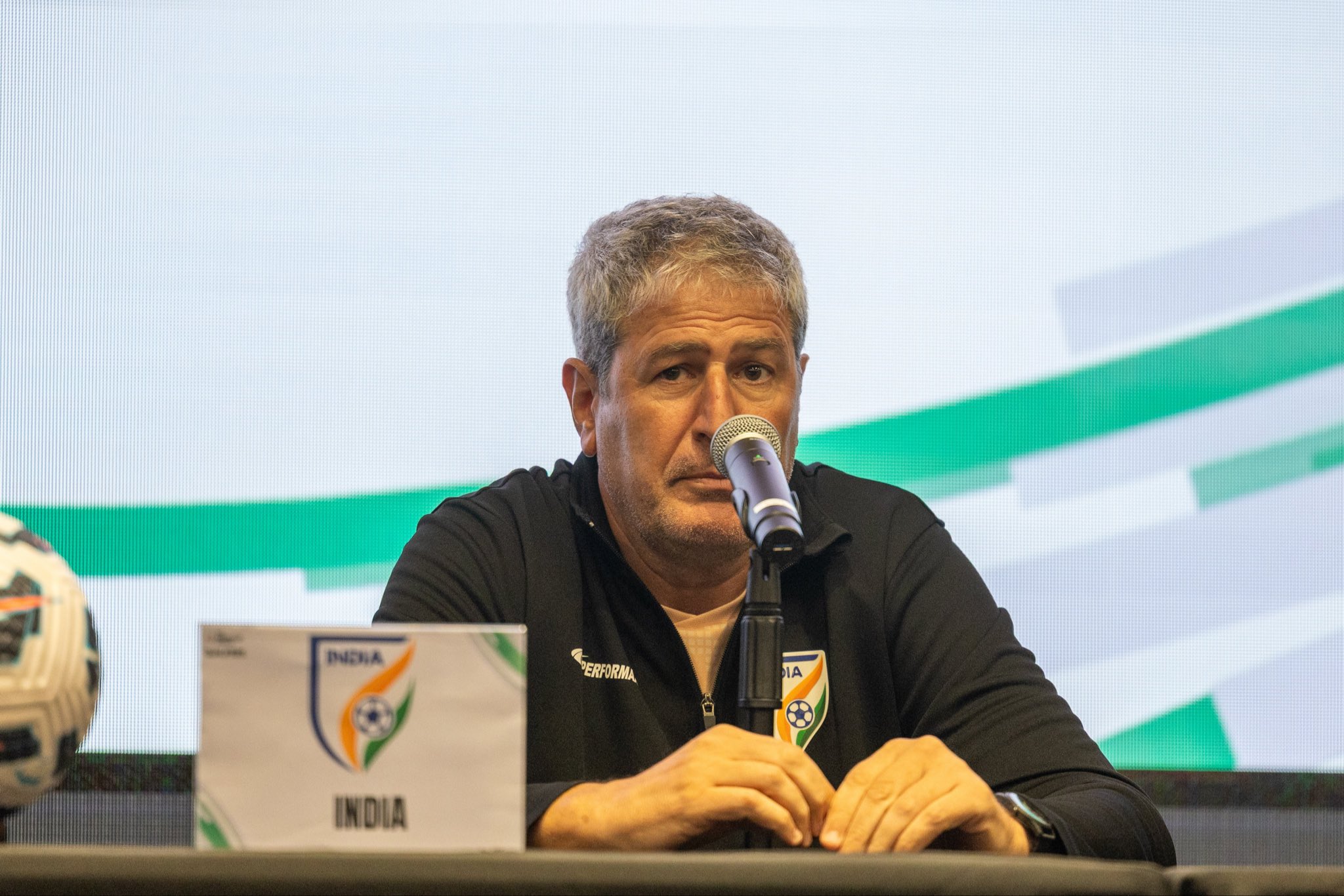The Blue Tigers, Indian Men Football carried the hopes of 1.4 billion, only to leave the field empty-handed and bruised.
That’s the story of India’s AFC Asian Cup 2027 qualifying campaign a journey that began with ambition and ended in disarray.
For the first time in over a decade, India will miss Asia’s grandest football stage. The campaign was a reflection of the team’s deep-seated struggles tactical missteps, managerial chaos, and a system still learning how to breathe in the modern era of Asian football. Yet beneath the heartbreak lies the blueprint for renewal, a path that could yet turn failure into foundation.
The Roots of the Fall
India’s road to the 2027 Asian Cup began as part of the combined 2026 FIFA World Cup and AFC Asian Cup qualifiers a dual-purpose pathway that offered early progress for Asia’s top two teams from each group. Drawn alongside Qatar, Kuwait, and Afghanistan, India entered under Croatian head coach Igor Štimac, the man appointed in 2019 to push the team beyond regional dominance.

The optimism of that cycle faded fast. A 2–1 loss to Qatar in Doha in November 2023 exposed defensive lapses. Days later, a goalless draw against Kuwait showcased some resilience, but the cracks were forming. Then came the March 2024 disaster in Guwahati a 1–2 home defeat to Afghanistan, despite Sunil Chhetri’s early opener. That loss, followed by another draw, left India teetering.
June’s 1–0 win away to Kuwait briefly revived hope, but a crushing 0–3 defeat at home to Qatar sealed India’s third-place finish in Group A. The consequence: out of World Cup contention, and into the Asian Cup’s third-round qualifiers, where only group winners would advance.
Štimac was sacked soon after. His record 19 wins, 14 draws, 20 losses (37.7% win rate) across 53 matches tells the story of stagnation more than progress. Despite SAFF Championship titles in 2021 and 2023, his side never evolved past familiar failings: sterile possession, blunt attacking play, and defensive disorganization.
The Marquez Interlude
In July 2024, Spanish tactician Manolo Márquez, fresh from ISL success, took charge promising fluid, possession-heavy football. His first task? Convincing a 40-year-old Sunil Chhetri to delay retirement. Marquez’s methods looked modern on paper build from the back, dominate possession, and play with width but reality struck hard.

In his first competitive outing, India drew 0–0 with Bangladesh in March 2025 despite having 65% possession and zero shots on target. The team’s inability to turn control into chances became symptomatic of a deeper malaise. June’s 0–1 defeat in Hong Kong, via a soft penalty, summed up the Marquez era: technically promising but toothless. Across eight matches, he managed just one win (a 3–0 friendly win over Maldives), four draws, and three defeats.
Marquez’s vision, though progressive, clashed with India’s limited technical base and fragile confidence. He resigned by July 2025, leaving a squad searching for identity, belief, and goals. In stepped a familiar domestic name to steady the ship Khalid Jamil.
Jamil and the Last Flicker
Appointed interim coach in August 2025, Khalid Jamil arrived with credibility built from his AFC Cup experience and a remarkable third-place finish at the CAFA Nations Cup, where India stunned Oman and Tajikistan. His blueprint was pragmatic: defend deep, counter swiftly, and play with heart. Initially, it seemed to work. A nervy 1–1 draw in Singapore rescued by Rahim Ali’s late equaliser offered a sliver of hope. But the return leg in Goa on 14 October 2025 brought heartbreak. In front of a packed Fatorda Stadium, Lallianzuala Chhangte fired India ahead, only for Singapore’s Song Ui-young to strike twice in a devastating turnaround that ended India’s qualification bid.

That 1–2 defeat was more than just a match lost it was the symbolic collapse of a cycle.
Indian Football’s Asian Cup Dream Ends in Goa and It’s More Than Just a Loss
Three managers in 18 months, one tactical identity crisis, and a squad that never truly gelled. India’s third-round group ended with the team bottom of the table, mathematically eliminated with one game to spare.
Behind the Collapse: Chaos Beyond the Pitch
India’s failure wasn’t a fluke. It was the culmination of structural decay beneath the surface.
- Managerial instability: Three coaches in 18 months tore away any chance of continuity. Štimac’s direct, long-ball style gave way to Marquez’s possession-heavy approach, only for Jamil to revert to deep defending. The players were left adapting to new systems every few months a tactical whiplash that shattered rhythm and confidence.
- Over-reliance on Chhetri: With 94 goals in 151 appearances, Sunil Chhetri remained India’s beating heart. But his supporting cast faltered. Since Štimac’s departure, India managed just one open-play goal in five games, exposing a crisis in attacking succession. Strikers like Rahim Ali and Manvir Singh struggled to replicate the captain’s instinct, while creative players like Sahal Abdul Samad and Brandon Fernandes were in and out of the squad through injury and inconsistency.
- Domestic disarray: The Indian Super League (ISL), the backbone of India’s footballing calendar, suffered a turbulent 2024–25 season. Broadcast disputes, player salary issues, and club withdrawals disrupted the rhythm of domestic football. Players arrived at national camps undercooked and mentally fatigued. To make matters worse, over 40 players were rotated through the third round an unmistakable sign of confusion and desperation.
- Administrative setbacks: The All India Football Federation (AIFF) once again found itself under scrutiny delays in appointing the national coach, indecision over youth policies, and inconsistent communication with clubs. Fan engagement plummeted; half-empty stadiums echoed India’s footballing apathy in a cricket-dominated nation.
By October 2025, India’s FIFA ranking lingered in the 130s, their lowest in five years. The dream of emulating the 2019 Asian Cup run where India impressed under Stephen Constantine was gone.
The ruins of this campaign can yet be the foundations of a rebirth if India learns, reforms, and recommits. Here’s how the revival must unfold.
Stability at the Top: India’s coaching merry-go-round must stop. Whether it’s Khalid Jamil or a foreign tactician with a long-term mandate, the next appointment must come with a four-year plan, aligned with the 2030 World Cup and 2031 Asian Cup cycles. Jamil’s CAFA Nations Cup record shows that disciplined, defensive organization can make India hard to beat. Stability and trust are now worth more than short-term experimentation.
Fix the Domestic Engine: The health of Indian football begins at home. The ISL and I-League merger needs revisiting to unify the pyramid and raise competitive intensity. Clubs must be incentivized to play U-21 talent, with mandatory youth quotas and better scouting networks. Partnerships like Reliance’s tie-up with SL Benfica should be replicated to create a genuine striker pipeline, something India has lacked for over a decade.
Korou Singh Shines as India U23 Hold Indonesia to a 1–1 Draw in Jakarta
Synchronizing the ISL with the FIFA calendar would also prevent fixture clashes and allow longer, data-driven national camps.
Tactical Identity and Youth Injection: The next India must find its own footballing voice neither blindly defensive nor overly idealistic. A hybrid system blending controlled possession with counter-attacking pace suits the Indian player profile. Integrating the U-23 generation exemplified by players like Bryce Miranda, Parthib Gogoi, and Vikram Pratap Singh is essential to inject freshness and fearlessness.
Modern analytics must play a role too. With a shot conversion rate of 35% in qualifiers, specialized finishing and set-piece training are non-negotiable.
Infrastructure and Inclusion: The gaps aren’t only tactical they’re infrastructural. India needs more FIFA-approved turf pitches, regional high-performance centers, and sports science integration to prevent injuries and optimize recovery. On the personnel side, India must also embrace diaspora and naturalized talent responsibly players like Yan Dhanda represent a new frontier, provided integration doesn’t dilute the domestic development ethos.
The Triple Threat: How 2025 Became the Defining Year for Indian Women’s Football
Chhetri’s Legacy and Transition: For over two decades, Sunil Chhetri has been India’s symbol of excellence and endurance. As his career winds down, AIFF must allow him to mentor the next generation, possibly in a player-mentor hybrid role until the 2026 World Cup qualifiers conclude.
A fitting farewell would be to guide India to another SAFF Championship title in 2025 a symbolic full circle for the nation’s greatest player. But beyond nostalgia, the roadmap must look ahead toward a Top-100 FIFA ranking by 2030 and genuine competitiveness at the 2031 Asian Cup.
India’s elimination from the AFC Asian Cup 2027 is not merely a sporting loss it’s a reflection of a system caught between ambition and inertia. The campaign began with dreams of breaking barriers but ended with familiar lessons.
A fractured domestic ecosystem, tactical indecision, and administrative inertia all conspired to bring down a team that, for fleeting moments, made 1.4 billion believe. Yet, amid the wreckage lies a heartbeat a reminder that Indian football’s story isn’t over. From the 2019 Asian Cup’s promise to the 2025 collapse, each chapter offers a lesson. If the AIFF can act decisively, rebuild trust, and embrace bold structural reform, this heartbreak could yet mark the dawn of a new era. The road ahead is long, but for the Blue Tigers bruised yet unbroken it’s not the end.
It’s the beginning of a reckoning.
How useful was this post?
Click on a star to rate it!
Average rating 4.8 / 5. Vote count: 35
No votes so far! Be the first to rate this post.






